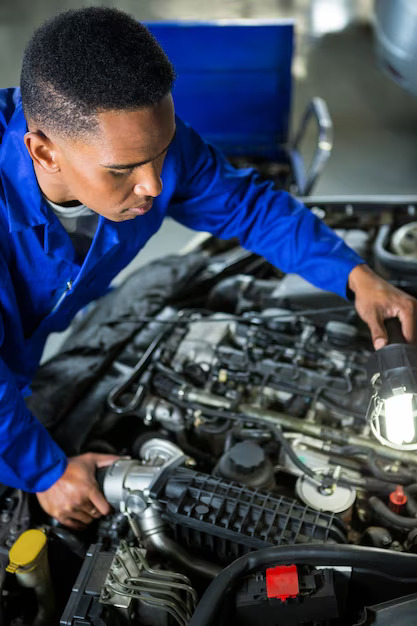South Africa’s diverse climate, ranging from scorching summers to cold winters, puts significant strain on a vehicle’s cooling system. The cooling system plays a crucial role in maintaining the engine’s temperature, preventing overheating, and ensuring optimal performance. Proper maintenance of the cooling system is essential for South African car owners to avoid engine damage and breakdowns. This article provides practical tips to help you keep your car’s cooling system in optimal condition and ensure trouble-free driving in South Africa’s challenging weather conditions.
- Regularly Inspect the Coolant Level and Quality
Regularly check the coolant level in the overflow reservoir and ensure it is at the recommended level indicated by the manufacturer. Low coolant levels can lead to overheating and engine damage. Additionally, inspect the coolant quality. If the coolant appears dirty, rusty, or has a milky consistency, it may indicate contamination or a coolant leak. In such cases, consult a qualified mechanic to identify the issue and perform the necessary repairs or coolant flush.
- Flush and Replace the Coolant
Over time, coolant accumulates contaminants and loses its effectiveness in regulating engine temperature. It is crucial to flush and replace the coolant at the recommended intervals specified in your vehicle’s owner manual. Flushing the cooling system removes old coolant, debris, and deposits, ensuring optimal performance. Always use the coolant recommended by the manufacturer, as different types of coolant have varying chemical compositions and are designed for specific engine requirements.
- Inspect and Maintain the Radiator
Regularly inspect the radiator for any signs of damage or blockage. Check for bent or damaged fins, which can restrict airflow and hinder cooling efficiency. Use a soft brush or compressed air to clean debris, bugs, and dirt that may accumulate on the radiator surface. Additionally, ensure that the radiator cap is in good condition and properly seals to maintain the system’s pressure.
- Check the Hoses and Belts
Inspect the radiator hoses and other cooling system hoses for signs of cracks, bulges, or leaks. Replace any damaged hoses promptly, as they can lead to coolant leaks and system failure. Also, check the condition and tension of the drive belt that operates the water pump. A worn or loose belt can affect the water pump’s performance and coolant circulation.
- Maintain Proper Airflow
Ensure that the cooling system’s airflow is not obstructed. Clear away any debris or leaves that may accumulate around the radiator or air intake. Clean the front grille regularly to prevent clogging. Proper airflow allows for efficient heat dissipation, maximizing the cooling system’s effectiveness.
- Monitor Engine Temperature Gauge and Warning Lights
Pay attention to the engine temperature gauge on your dashboard. If you notice the gauge consistently indicating high temperatures or the engine overheating warning light illuminating, take immediate action. Pull over to a safe location, turn off the engine, and allow it to cool down before inspecting the cooling system. Continuing to drive with an overheated engine can cause severe damage. Seek professional assistance if needed.
- Consult a Qualified Mechanic
Regularly schedule professional inspections and maintenance for your car’s cooling system. A qualified mechanic can perform thorough checks, identify potential issues, and perform necessary repairs or maintenance tasks. They have the expertise and diagnostic tools to ensure your cooling system functions optimally, giving you peace of mind on the road.
Maintaining a healthy cooling system is crucial for South African car owners, considering the country’s varying weather conditions and demanding road environments. By following these tips and regularly inspecting and maintaining your car’s cooling system, you can prevent overheating, engine damage, and costly repairs. Keep your engine cool, enjoy trouble-free driving, and ensure the longevity of your vehicle in South Africa’s diverse climate.











